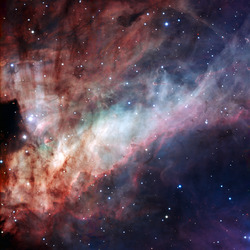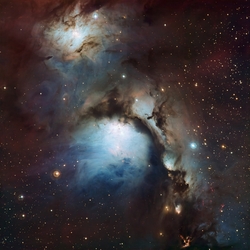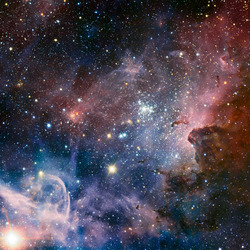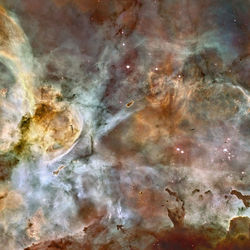
A reflection nebula is a cloud of interstellar gas and dust that reflects the light from other stars. This happens in the surroundings of stars that are not hot enough to excite the hydrogen atoms of the cloud (as is the case for emission nebula that are emitting light, not just reflecting the light from stars).
Reflection nebulae mostly appear to have a blue colour. This is because particles in the nebula scatter (or reflect) blue light more efficiently than they scatter red light. The same effect is responsible for our sky being blue, not red, during the daytime. The blue part of sunlight (which is a mixture of light of all colours) is scattered much more in the earth's atmosphere than any other colour of the sunlight. Hence, the blue light is scattered to the surface from all parts of the sky, whilst the other colours mainly pass through the atmosphere without being deflected. At sunset - when the path of the light through the atmosphere is much longer - it's the opposite: the red light penetrates deeper into the atmosphere while the blue light gets scattered and reflected long before it can reach the surface of the earth. This results in the intense red and orange colours during sunrise and sunset.
There are about 500 known reflection nebulae that we have observed so far. Recently whole galaxies have been discovered that react more or less like a reflection nebula. These young galaxies are essentially huge clouds of hydrogen and helium gas that were formed in the early universe and have no star formation at the time we can observe them. A very bright quasar (a very luminous galaxy) can illuminate the gas of these galaxies so we can see them even though they have no stars that emit any light. It's the same principle as for reflection nebulae, just on a much greater scale.
Other types of nebulae that can be observed are supernova remnants and emission nebula.





